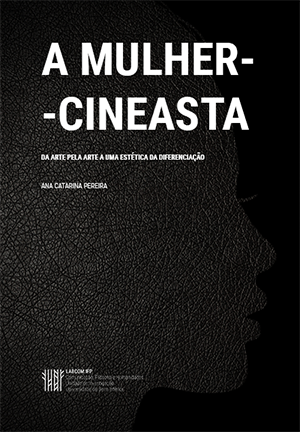by Ana Catarina Pereira
Collection: Ars
Year of edition: 2016
ISBN: 978-989-654-278-8
Price of the print edition: € 13
Order
Download PDF - 12700 KB
Synopsis
The feminist movements not only invented new strategies or new lexicons, but, more important, conceived a new social subject, women: not just as readers, viewers and consumers of cultural objects, but also as writers, directors and producers of those cultural objects. The focus in the Portuguese cinema directed by women corresponded, thus, to the study of a double invisibility: one that goes beyond the consecration of some names, but also the antagonistic interest of the general public. Noting that the Portuguese woman filmmakers have only held 14% of the fiction feature films premiered commercially over the past three decades, one advocate positive discrimination measures, such as the inclusion of shares in the entrusting of funds and the creation of a women's film festival in Portugal.
Index
Preface - 9
Introduction - 11
Part I Theory - 15
Chapter 1 - Human Rights and
Feminism(s) - 17
Historicity of human
rights - 17
First attempts of
jurisdiction - 23
The first moving images - 28
The first women filmmakers - 33
Chapter 2 - The second wave of
a beauvoirian feminism - 39
Europe in the fifties - 39
The construction of a feminist
lexicon - 48
Winds of change in post-Second
sex and its influence on the seventh art - 52
“Women are messed over, not
messed up” - 58
When the private sphere
becomes political - 61
The first international
feminist cause - 63
Chapter 3 - The weakness of
the right to equality in democratic societies - 73
Concept "equality"
in Norberto Bobbio - 73
Justice rule - 76
Implementation systems of the
right to equality - 80
Oppression as a mechanism
generator of social inequality - 83
Chapter 4 - Art and politics:
the woman seen as the other - 89
Movies that preserve
prejudice - 89
Distant images - 93
The look of Laura Mulvey - 99
A political cinema - 110
Chapter 5 - The female psyche
in a male cinema - 113
The sensitive - 113
The sexualized - 118
Chapter 6 – From the universal
spectator to the passivity of the woman who watches - 125
The universal viewer - 125
The identification process of
the female spectator - 129
The undefined spectator - 135
The mechanism of images
creation - 138
Changing the dominant
cinema - 141
The female spectator’s
non-place - 145
Women's film festivals
worldwide - 147
Chapter 7 - The unbearable
lightness of a definition: is there a female aesthetic? - 151
Oblivion and subversion - 152
Female Cinema versus male cinema - 154
The feminist art (and cinema)
as a political weapon - 162
Text and context - 168
Part II - Methodology - 173
Chapter 8 - The strange case
of the Portuguese cinema - 175
The female precursors - 175
The films made - 180
Shooting in democracy - 187
Comparative data - 196
Methodologies and drawing of a
research - 199
Part III – Empiria - 221
Chapter 9 - Female adultery
through the look of Monique Rutler: The discreet charm of a Republican and false-moralist
bourgeois - 223
Socially incorrect - 224
A movie unapologetically
feminist - 228
Monique Rutler’s look on
Portugal - 233
Sins of an adultery in the
feminin - 239
Final considerations about Solo de Violino - 246
Chapter 10 - Cláudia Tomaz’s
nihilism: the eternal-return to a Portuguese cinema centred on human
miserabilism - 249
Breathtaking images - 250
The influences of Teresa
Villaverde and Pedro Costa - 257
Nihilism and eternal
return - 263
The female passivity - 266
The evolution in Cláudia Tomaz’s
cinematographic route - 272
Chapter 11 - Solveig Nordlund
film-rehearsals: Holograms of a near future in which feminism and tolerance
lead to a paradigm shift - 277
J. G. Ballard and Solveig
Nordlund: The writer and the director of utopia in the Postmodernity chaos - 278
The feminization of an
essentially masculine tale - 281
Fear as a governance
instrument - 288
The female authors that have
marked the evolution of a genus - 294
The future of science
fiction - 302
The refusal of a futuristic
androgyny - 306
The eternal search for an
inclusive feminism - 309
Chapter 12 - The feminism
ghost in Catarina Ruivo’s work - 317
"The I is you" - 318
Inequalities that persist - 321
The urgency of happiness and
the absence of limits - 330
The indelible presence of
Virginia Woolf in Daqui p’rá frente - 334
Final considerations - 341
Annexes - 351
Bibliographic references - 357







